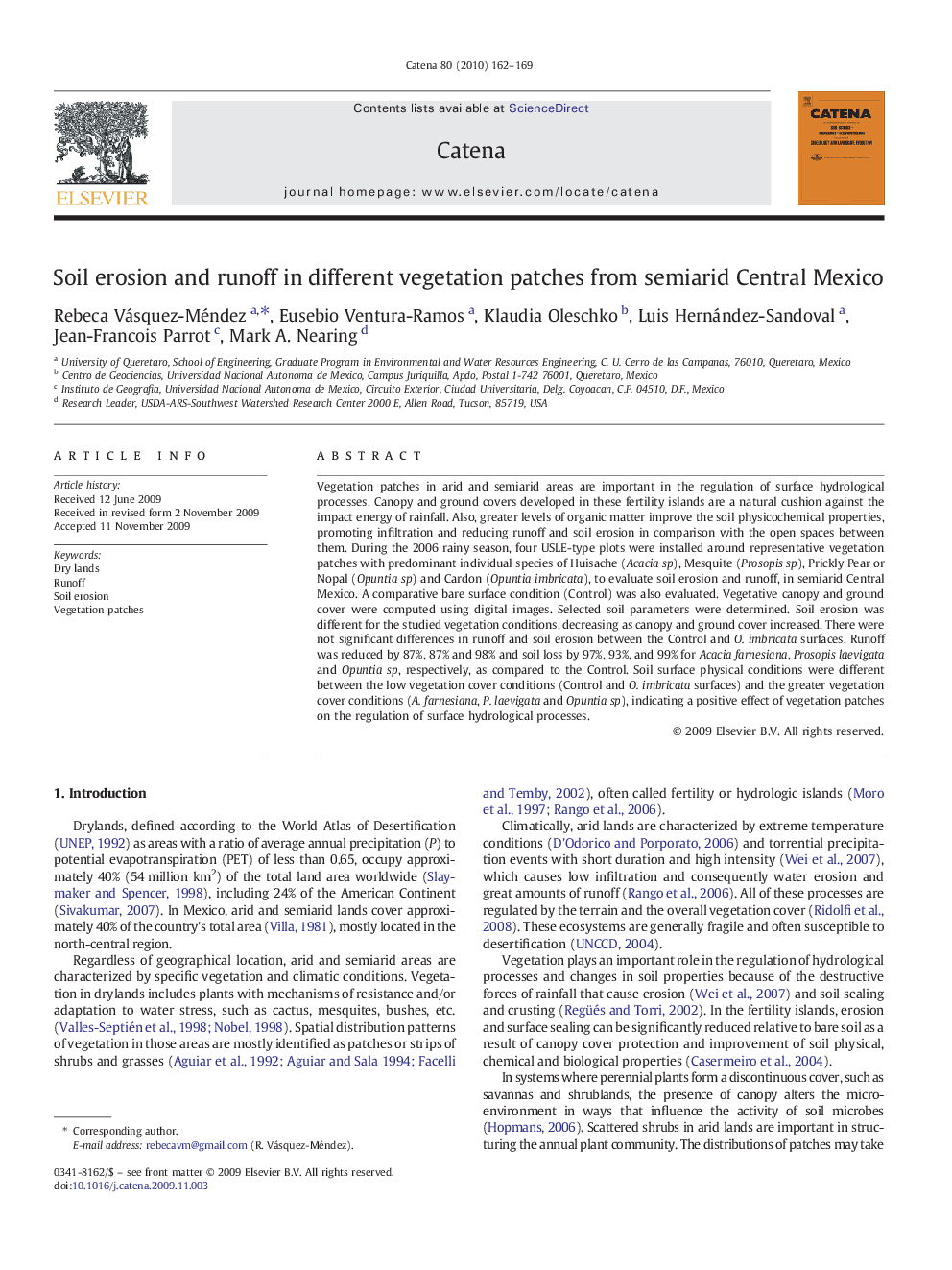| Article ID | Journal | Published Year | Pages | File Type |
|---|---|---|---|---|
| 4572176 | CATENA | 2010 | 8 Pages |
Vegetation patches in arid and semiarid areas are important in the regulation of surface hydrological processes. Canopy and ground covers developed in these fertility islands are a natural cushion against the impact energy of rainfall. Also, greater levels of organic matter improve the soil physicochemical properties, promoting infiltration and reducing runoff and soil erosion in comparison with the open spaces between them. During the 2006 rainy season, four USLE-type plots were installed around representative vegetation patches with predominant individual species of Huisache (Acacia sp), Mesquite (Prosopis sp), Prickly Pear or Nopal (Opuntia sp) and Cardon (Opuntia imbricata), to evaluate soil erosion and runoff, in semiarid Central Mexico. A comparative bare surface condition (Control) was also evaluated. Vegetative canopy and ground cover were computed using digital images. Selected soil parameters were determined. Soil erosion was different for the studied vegetation conditions, decreasing as canopy and ground cover increased. There were not significant differences in runoff and soil erosion between the Control and O.imbricata surfaces. Runoff was reduced by 87%, 87% and 98% and soil loss by 97%, 93%, and 99% for Acacia farnesiana, Prosopis laevigata and Opuntia sp, respectively, as compared to the Control. Soil surface physical conditions were different between the low vegetation cover conditions (Control and O.imbricata surfaces) and the greater vegetation cover conditions (A.farnesiana, P.laevigata and Opuntia sp), indicating a positive effect of vegetation patches on the regulation of surface hydrological processes.
